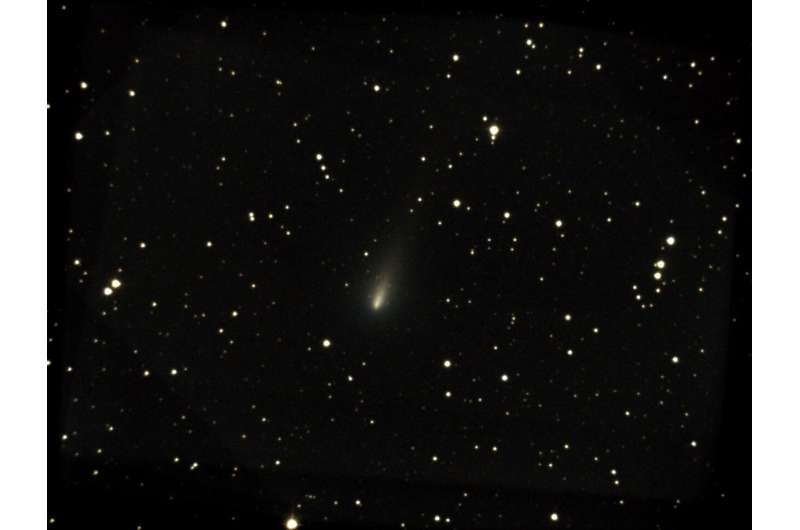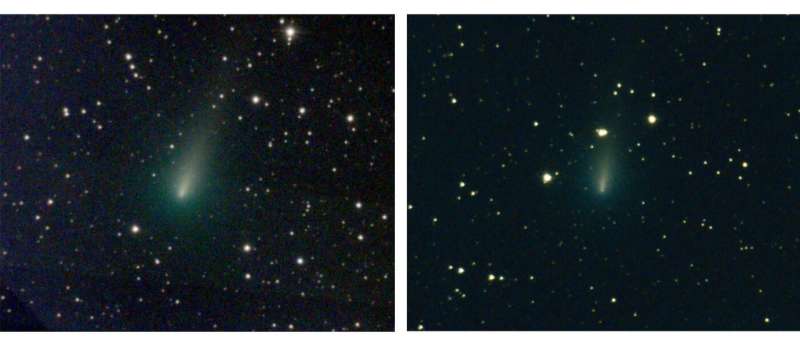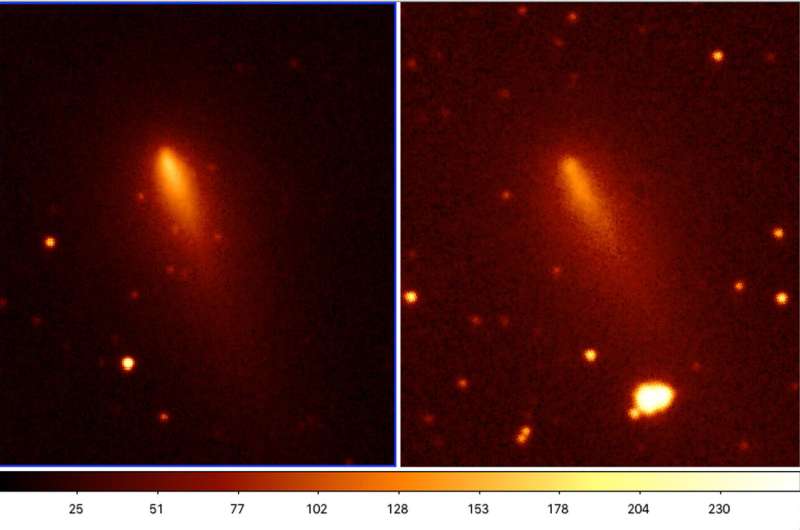Fragmentation of comet ATLAS observed on the first crowd-sourced pictures from citizen astronomers

A group of citizen astronomers scattered all over the world has just demonstrated how a network of digital Unistellar eVscopes can work together to deliver the first-of-its-kind crowd-generated images of Comet ATLAS while its disintegrating.
Discovered in December, Comet ATLAS was expected to become the brightest comet of 2020, visible to the naked eye. Several days ago, however, astronomers began to suspect that the comet had split into multiple pieces when it began dimming rapidly. At Unistellar, this created a unique opportunity to summon our community of citizen astronomers together to collect a high-quality image of this beautiful, but dying cosmic phenomenon.
On the night of Saturday, April 11, dozens of eVscope users in Belgium, Finland, France, Switzerland, Germany, the United Kingdom, and other countries gathered virtually to set up eVscopes in their backyards, on balconies, or out in the countryside. Their locations varied, but they all had one and only one goal in mind: capture photos of the dying comet. A similar call for observations was released on Tuesday, April 14 for the US after demise of the comet was announced to image variation in the coma of the comet.
While observing the comet through the eVscope's eyepiece, forty users in Europe, and twenty users in the US, also collected data they sent to Unistellar's servers. The data was combined and processed to create a "super image" that revealed Comet ATLAS in an extremely high level of color and detail, including a tail and coma and the eerie greenish glow associated with the presence of cyanide gas. The image taken from the US users three days later show the change in morphology of the coma, which suggests that the comet nucleus is indeed fragmenting.

"We've combined observations from multiple users to produce a highly accurate observing record of Comet ATLAS. Our analysis proves that we can see extremely dim objects, such as very faint stars (up to magnitude 18), in the background behind the comet," explained Arnaud Malvache, Chief Technology Officer at Unistellar.
Unistellar's eVscope offers unique observing experiences that also allow users to play an active and important role in astronomy by joining observing campaigns that bring a vast array of connected telescopes together to gather data for a posteriori analysis.
These crowd-sourced events can also be fun and educational, as exemplified by a recent worldwide Messier Marathon. During the Messier Marathon, users observed most of the 110 galaxies, nebulae, and clusters indexed in the Messier Catalog. They seamlessly shared their observations live, thereby achieving one of the most coveted goals on an amateur astronomer's bucket list.

These events are bringing to life Unistellar's vision to make astronomy a living adventure where all users can take part for fun, education, outreach, or to generate cutting-edge science. "Future campaigns could include, for example, observing a new supernova and detecting its host galaxy from a myriad of eyes working together to observe an explosion several million light-years away, or observations of a potentially hazardous asteroid as it flies by our planet. More projects than we can currently imagine will emerge from this network of small, powerful, and portable eVscopes," said Franck Marchis, Senior Astronomer at the SETI Institute and Chief Scientific Officer of Unistellar.
Provided by SETI.org





















